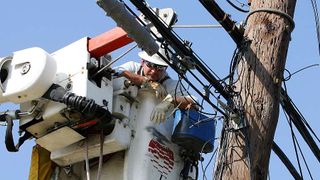FCC Takes 'Historic' Pole Position

The FCC voted Thursday (Nov. 16) on yet another effort to speed broadband deployment, in this case a decision that eases utility pole replacement on historic properties.
The agency determined that a new historic preservation review is not necessary when a utility pole on an historic property is replaced with a substantially identical one. The decision loosens the requirement, under the National Historic Preservation Act, for an individualized review of whether a pole replacement project could affect the property in question.
Replacement poles will be excluded from the review requirement if the original pole itself is not an historic property, and the new pole is consistent in appearance with the original and is placed in the same hole without new "ground disturbance," according to the order.
Clearing away impediments to tower citing and pole attachments are high on FCC chair Ajit Pai's list of ways to boost broadband deployment.
Though it was somewhat overshadowed by contentious, high-profile votes on media ownership, next-gen TV and the Lifeline broadband subsidy program, the decision was celebrated by those who face replacing utility poles.
Related: Bitterly Divided FCC Votes New Lifeline Reforms
USTelecom CEO Jonathan Spalter wa pleased with the move: “The FCC’s actions are another in a series of common sense regulatory reforms by this commission. If a replacement utility pole uses the same hole and looks like the original, there seems to be little sense in requiring a historic preservation review. The agency’s pole attachment changes will make it faster and easier for broadband providers to expand the availability of their services. Speeding up the pole replacement process to support next-generation wireless services is a smart, consumer-centric move.”
NTCA-The Rural Broadband Association also called the change a "common-sense provision," saying it "will ensure that the wired and wireless infrastructure necessary for the emergence of next-generation services can be built while promoting continued protection of historical properties at the same time."
AT&T said: "The commission rightly recognizes that replacement poles have no reasonable potential to adversely impact historic properties and should therefore not be subject to burdensome rules and a lengthy preservation review process. Today’s order gets us one step closer to the rollout of 5G technology by enabling carriers to deploy upgraded utility poles that can hold critical small cell technologies."
Broadcasting & Cable Newsletter
The smarter way to stay on top of broadcasting and cable industry. Sign up below
Contributing editor John Eggerton has been an editor and/or writer on media regulation, legislation and policy for over four decades, including covering the FCC, FTC, Congress, the major media trade associations, and the federal courts. In addition to Multichannel News and Broadcasting + Cable, his work has appeared in Radio World, TV Technology, TV Fax, This Week in Consumer Electronics, Variety and the Encyclopedia Britannica.

